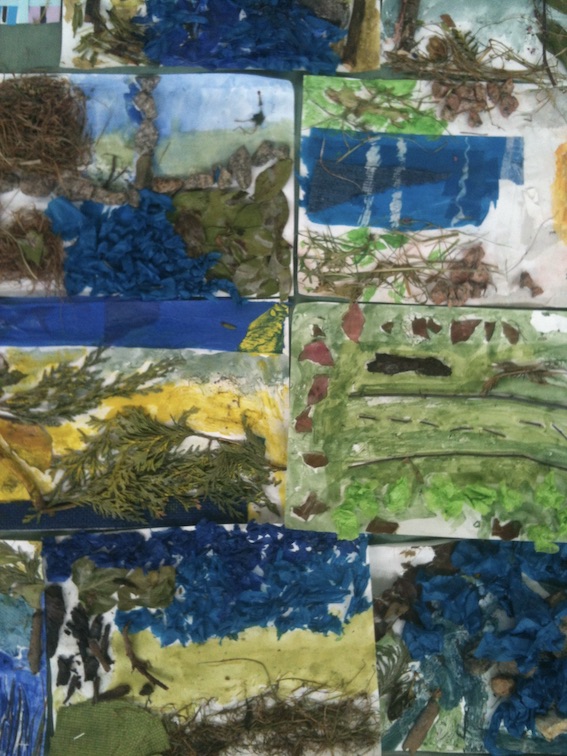
30th November – St Andrew’s Day – is regarded as Scotland’s National Day. Increasing number of people living in Scotland make the most of the day to celebrate Scottish traditions and culture. I rather like that Saint Andrew is the patron saint. He’s not Scottish but was one of the twelve apostles, coming from a family of fishermen. Although he travelled extensively following the death of Jesus, the historical evidence suggests that only his remains made it to Scotland. It is unlikely that he visited in person. Andrew was crucified on a saltire cross for his beliefs on 30th November 60AD. This is the cross that’s on the Scottish flag.
Often when people think about culture, the normal associations are those around history, costumes, music, dance, famous people and food.
Yet culture comes from our relationship with the land. Our identity is defined and shaped by the natural elements such as the rocks, the weather, the plants and wildlife. It comes through in the language, the legends, the songs and the stories. So to ignore the natural heritage of Scotland is to ignore a part of our being.
At this time of year, Scotland’s weather can often be described as “dreich”. The days are getting shorter, the winds stronger, there’s more rain and usually the first snow will have appeared on the higher hills. However, with falling levels of natural light and the risk of cabin fever setting in, if children don’t get plenty of time outside. Thus outdoor activities remain important to include within the ongoing work of a classroom. So here’s some ways to celebrate the Scottish culture outside at this time of year….
1. A white and blue treasure hunt
Armed with a digital devices such as a tablet or an iPad, get outside and take photos of anything you can find which is blue or white. This may involve a bit of cropping of the photos afterwards. Then using an app like Pic Collage, create the Scottish flag using photos taken. What do children notice about the colours, where they were found and the purpose of the colour. Is it possible to find any natural examples of these colours at this time of year? The photo in this blog post is just photos of white objects… who would have thought there were so many shades of white!
2. Go for a Scottish culture walk
Walk around your local area and take photos or sketch anything that your class feels is Scottish. It could be the name plate of your town, a sticker on the back of a car, the menu in a cafe and so on. What do the results of your findings suggest? Is it possible to define Scottish culture and if so, how? This is good to do if the children have the opportunity to chat to other people to find out their opinions too.
3. Collect place names
Scotland has many brilliant place names. If you live in an urban area, it can be the names of shops, streets, organisations. This can be an ongoing collection and can help children learn about local services and businesses that exist in their area. In my neighbourhood many of the street names reflect the golf course where the the estate was built. The private plots are all on Old Course Avenue! (Another link to St Andrews).
4. Visit a grave yard
Have a brainstorm with your class and consider what can be learned about Scotland and the local area from visiting a graveyard. Put together a list of things to find out or collect and share out the tasks. For example, it can be interesting to see if there are patterns to the family names on gravestones. It can provide a gateway into local history projects. Graveyards can also demonstrate that people have always migrated – for jobs, for the hope of a better life, etc.
5. Traditional playground games
Hold a playground games session. Ask parents and grandparents and even great-grandparents to come along and share the playground games they know and remember from their school days. Which ones have survived over the generations? Which ones do the children want to revive?
6. Tree Dressing
Create simple blue and white God’s eyes and hang them on a native tree or shrub. These can be made using wool and fallen twigs. As St. Andrew was a fisherman and one symbol of Christianity is a fish, then making fish from willow withies is another option. These can also be decorated and hung on the tree. Each child can tie a piece of blue or white ribbon onto the tree and make a wish for Scotland as they do so. A simple collection box can be created so that that a Scottish charity of the children’s choice benefits. Have a look at the Clootie tree for inspiration. Thanks to Fiona Hamilton and Anne Paterson for some of these suggestions.
7. Plant and discover more about native trees
November is traditionally when the tree planting season begins. By planting native trees we increase the biodiversity of the area and create natural habitats for many forms of wildlife. The Woodland Trust provides free trees and many countryside rangers and wildlife organisations can provide practical guidance – so that your school has a plan for maintaining and caring for the trees year on year – remember to check with your school estate officer or local authority contact about any tree planting you intend to do within the school grounds. As well as planting native trees, take time to find out the stories and history that are associated with each species.
The ForestryScotland have produced a free set of Tree Stories as told by Claire Hewitt, a professional storyteller. Put this term into the resource search on their website and it should appear.
8. Explore the Gaelic Alphabet
The Gaelic Alphabet has 18 letters and each one is linked to a native tree or shrub. To add further interest, this can also be represented in Ogham – which can be written by drawing lines into the ground or using sticks. You will see this in the above link.
9. Nature Tartan and Natural Shades of Scotland
In years gone by, tartan was created by dying wool with native plants and spinning. Look at the complexity and design of tartan, then develop your own by weaving with these long natural materials. Alternatively – go collecting the colours of the season. This can be done on a dry day using a piece of masking tape. Each child makes a band that they put on their wrist, with the sticky side facing up. Back inside these natural colours can be used to find appropriate shades of greens, browns and other colours which can be created through colour mixing of paint. These colours can then be used to create landscapes pictures based upon the work of contemporary Scottish artists. For added texture, dry and press collected leaves and other plant material before adding to the landscape picture in creative ways. Thanks to Julie Mountain for the inspiration behind this idea.

10. Make Porridge on an Open Fire
Lastly, for all the people who offer outdoor cooking or campfire experiences as part of their work with children, never forget the warmth of porridge. A pot of porridge cooked on an open fire. Seek the children’s experience of porridge and what they like to add to make it even more tasty: salt, banana, apple, raisins, honey, blackcurrant jam, golden syrup or real maple syrup are just some of the various possibilities. Thanks to Win Fenton for suggesting this. It’s also worth experimenting with other traditional recipes too:
- Fish is easily cooked on an open fire
- A Scotch broth soup is straightforward and makes the most of any harvested vegetables
- Bannocks may also work but I’ve not tried nor witnessed this…
What other ideas or recipes do you have that would work well outside?
This post was originally published in October 2016.




















My student’s love culture walks on our field trips. Not sure about the graveyard walk though, lol. Great list here, its good to get these kids outside-and they love it.